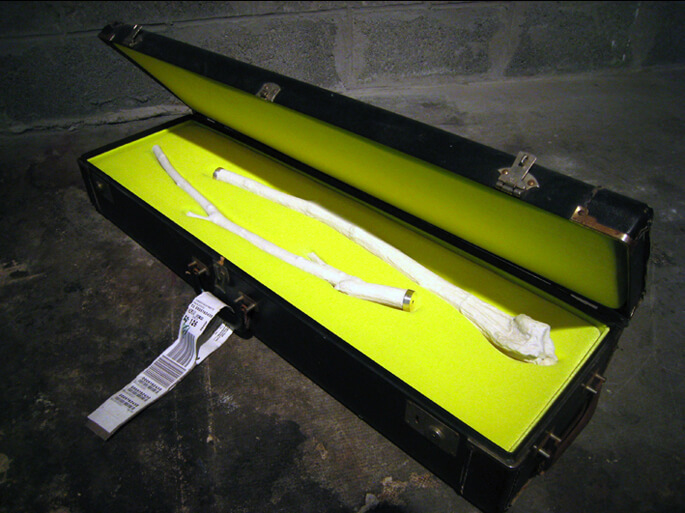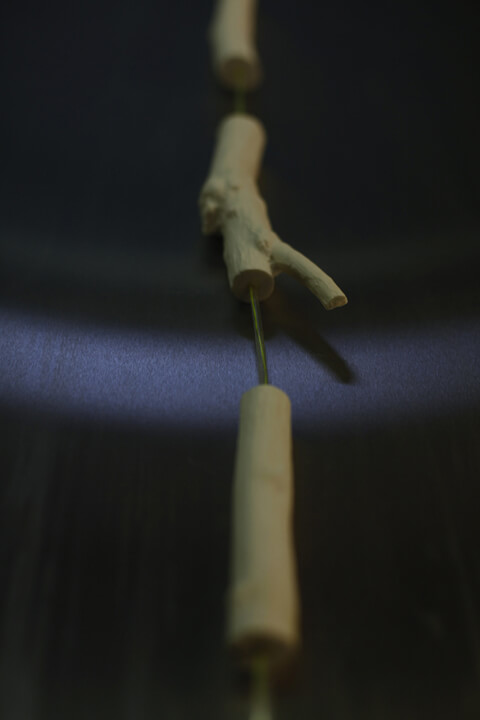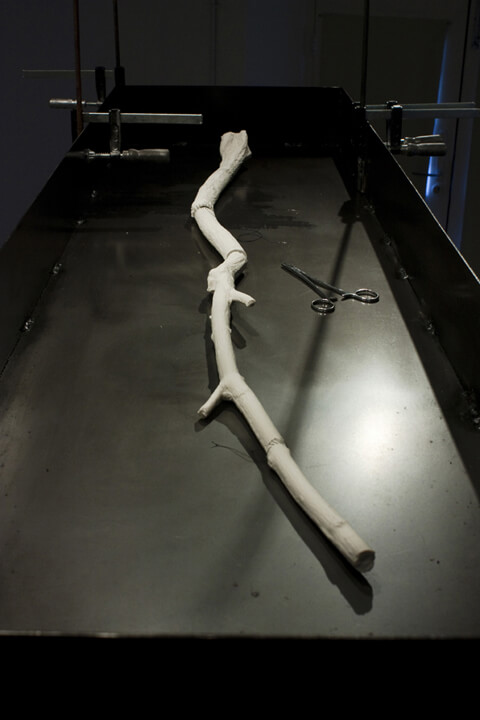Words by Meritxell Rosell
Cecilia Bullo is an Irish/Italian artist based in Dublin. Her work, largely sculpture and installations, is a journey through the inner fragile self, with the human body as the centre of her explorations of identity as well as physical and psychological injury and healing.
Concepts of human physiology, medicine, psychology and philosophy blend and flounder, as in an internal physical and emotional battle.
For Bullo, the human body, the recipient of pain, trauma and disease is represented in an array of materials and media. Porcelain reminds us of fragile bone, and marble and wax are modelled to resemble flesh. One central concept in her work is METANOIA, an ancient Greek word that means a transformative change of heart, a spiritual conversion; arising from personal experiences it is the journey towards the self revival.
In early projects like Holy anorexia, thorned fork and spoon become the weapon of pain infringement. But Cecilia’s sculptures also materialize in a variety of organic forms: wounds (Wound X) and horns (Carnu) with slits that open as if about to talk. In Complete Quixotan escapes and the fractured self, fragmented bone-like sticks evoke us to personal journeys. Are the fractured sticks an aid for these journeys or a metaphor for our fragility?
Oozing an extremely brutal honesty and strength but also delicacy and frailness, blending the horror and pain as well as immense beauty, Cecilia’s work will feel extremely close and soul-touching, making us look inside ourselves.
You are an artist working in the intersection of art and life sciences such as medicine. When and how did the fascination with them come about?
It was back in 2003 during the research for my thesis on the manifestation of blood circulation in art and science. The collaboration between artists and anatomists throughout history and the juxtaposition of images and theories were a source from which I began to draw ideas from.
I had spent some time researching in Holland and came across the experiments of Frederic Ruysh in Utrecht, in the Medish Universitair Centrum, and fell in love with these 17th c. anatomic-sculptures as aesthetic objects as well as medical teaching tools.
During this period I began to read about the theories of the philosopher and artist Antonin Artaud, who talked about “a body without organs”, to me this teasing paradox was the perfect matrix to begin my own investigation into the visceral body.
Imaginary mutant representations of life forms became the focus of my work. These surreal forms representing fears and phobias were also questioning conceptually and in a semi-humorous way, the what- if’s of science.
What are your aims as a (bio)artist working in between life science and art?
My work changes and takes shape by resourcing from different life realms. My aim as a visual artist at this particular moment would be to collaborate with scientists and biologists and give life and form to the abstract intangible ideas that I am pursuing.
Unconstrained by the laws of science my work escapes and avoids the limits of the logical, which gives me the freedom to express visually and conceptually, without worrying if it actually works as a scientific experiment.
Yet curiosity, as one of the main driving forces in my artwork teases me to explore aesthetic possibilities enabled by the scientific advances of biotechnology, I love contradictions.
Is art helping understand medical issues or it is challenging what society understands about them?
Using art as a tool to create dialogue with the viewer and bring to light subjects which are considered taboo or uncomfortable to address, is a powerful way to connect and bring it to a wider audience, but should not be not its aim. It would be interesting to see science doing the same for art…
What are the biggest challenges of BioArt?
I think overcoming the ethical limits and impositions, which inevitably arise, and the challenges of financing such projects.
What is your chief enemy of creativity?
Distractions and self-doubt.
You couldn’t live without…
My hands, the support of loved ones and strong coffee.










